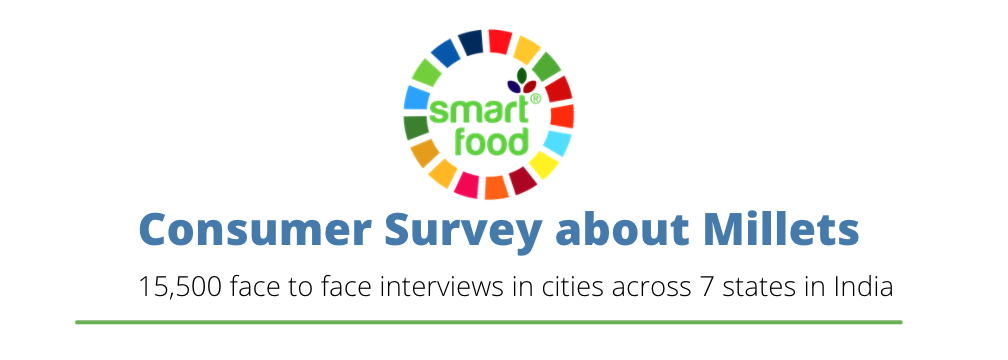
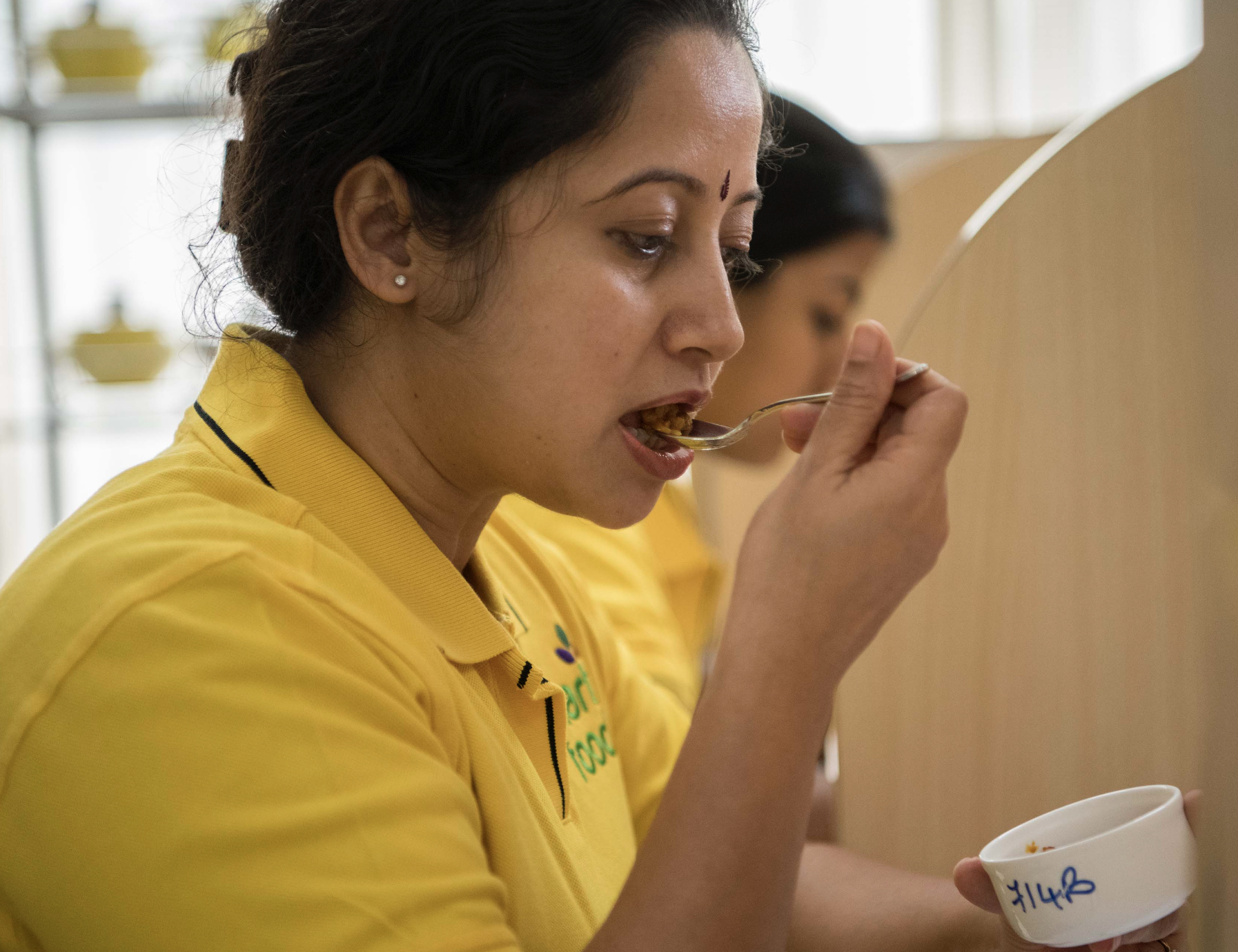
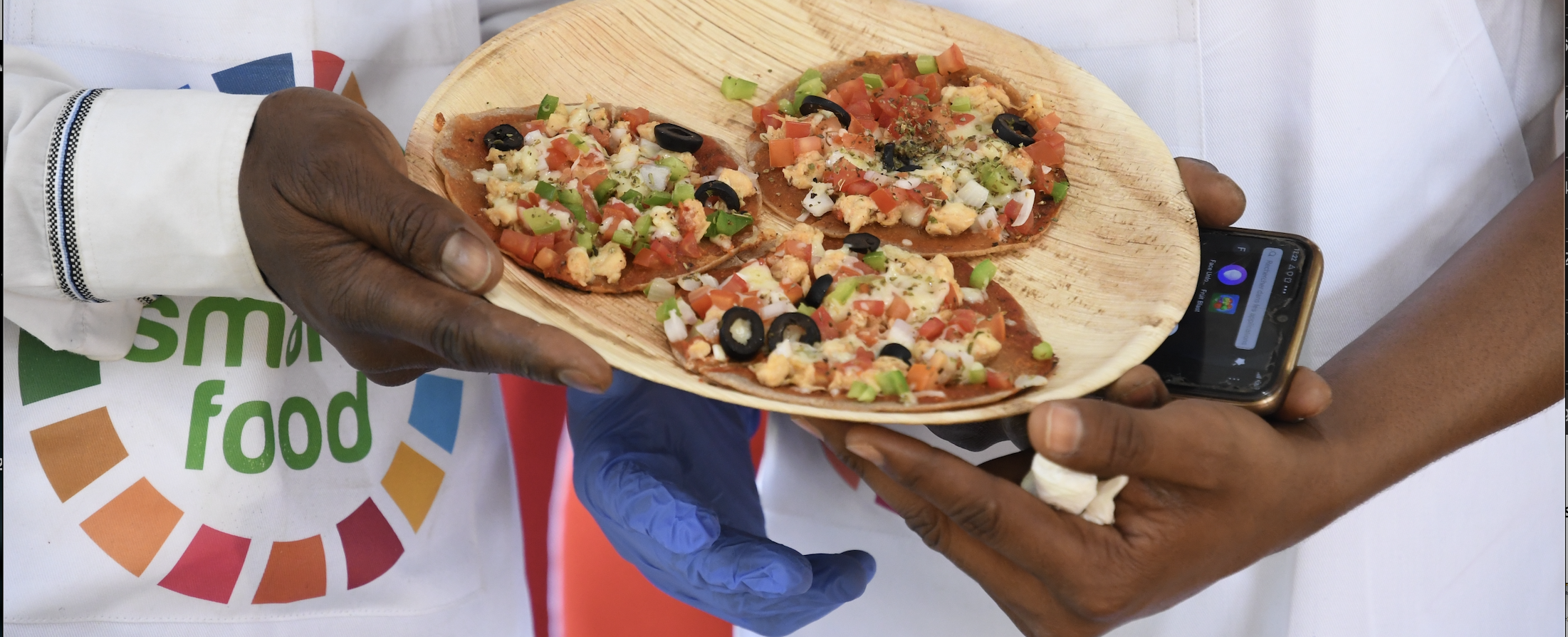
About the Study
This was conducted in August 2017 and forms an important baseline for tracking consumer perceptions and effectiveness of marketing activities.
The methodology included:
- Random convenience sampling in shopping malls
- 15,522 people interviewed
- In 7 cities in 7 states of South, West, North, and East India: Ahmedabad, Bengaluru, Chennai, Delhi, Hyderabad, Kolkata, Mumbai
- 9,453 were women and 5,686 were men, with a wide age range
- All data was also presented by city, age, gender and socioeconomic status
- Qualitative and quantitative questions were asked without prompts or options to select; except the first question where a picture of three popular millets, finger millet, pearl millet, and sorghum, were used as a visual aid showing the crop and the grain with their names in English, Hindi, and the state language.

Results
Largest reasons for consuming millets
- ‘I have a health problem’ (nearly 30% of people stating this)
- ‘I want to lose weight’ (15.1%)
- ‘I like the taste’ (about 14.6%)
- Ready to eat products (46%)
- Porridge consumed by (38%)
91 % of respondents were very or reasonably health conscious; However, only 40% were sure millets were healthy
The data indicates that the early adopters of millets are consumers with a health problem and so searching for solutions. Second are the people who are health conscious and interested in healthy lifestyles, where the identified knowledge gap about millets being healthy indicates market potential. However, to make a big impact it will be important to reach the mass markets.
- It is not eaten at home’, expressed by nearly 40% of the respondents
- ‘Don’t like the taste’ expressed by nearly 22%
- ‘Price is high’ (13%)
- ‘It takes a long time to cook’ (8%)
A considerable proportion of consumers ate millets frequently (49.6% consumed 1 or more times per week). However, there was also a reasonable proportion of people who had never or almost never consumed millets (34.9% consumed millets never or up to two times a year).
The findings imply a need to more actively promote the benefits of millets and to create awareness of various ways of cooking millets or creating millet products to satisfy taste preferences and change the perception of millets, which would in turn lead to an increase in their consumption.
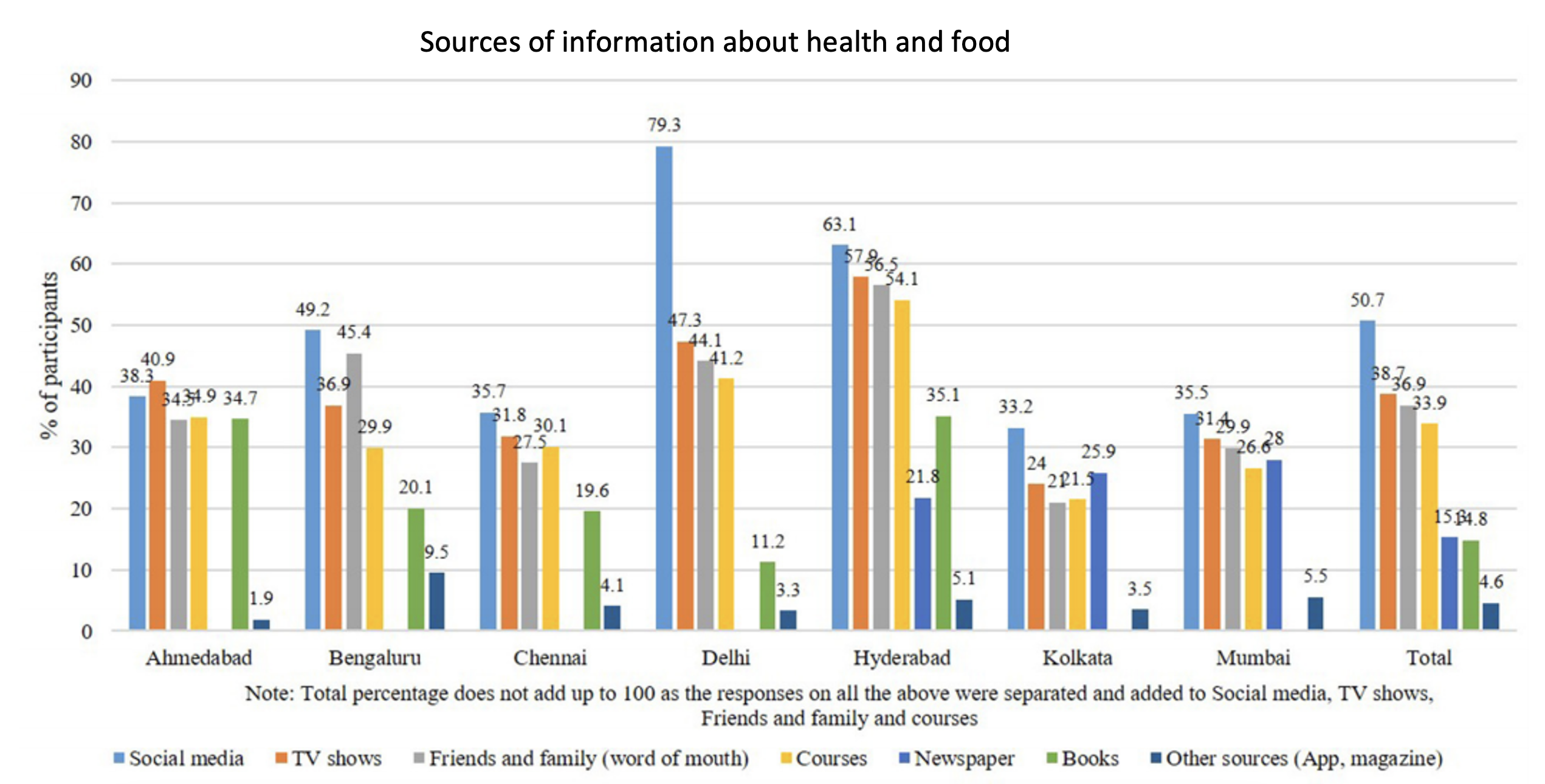
- Social media mentioned by 51%
- Friends and family mentioned by 34%
This shows an important outlet for governments and industry to use for promotions to reach consumers.
Conclusion
Future Research
- It is recognized that the market for millets can expand with appropriate awareness campaigns targeting different segments.
- The findings of this study may be useful for policymakers as well as different stakeholders, e.g., food companies, government entities, nutritionists, development organizations, and researchers, who intend to promote consumption of millets.
- The survey helps understand the motivation of consumers and how best to position millets in any campaigns while planning agriculture-based nutrition interventions to improve the market, consumption, and nutritional status.
-
-
- As this survey was undertaken in urban shopping centers, future studies should obtain similar consumer data at the rural and peri-urban locations to compare various consumer segments and to develop better understanding of millet utilization.
- Repeated studies should be conducted to track these changes over time and the influences on changed behavior.
-
Graphs
Respondents' reasons for consuming millets and sorghum in each city
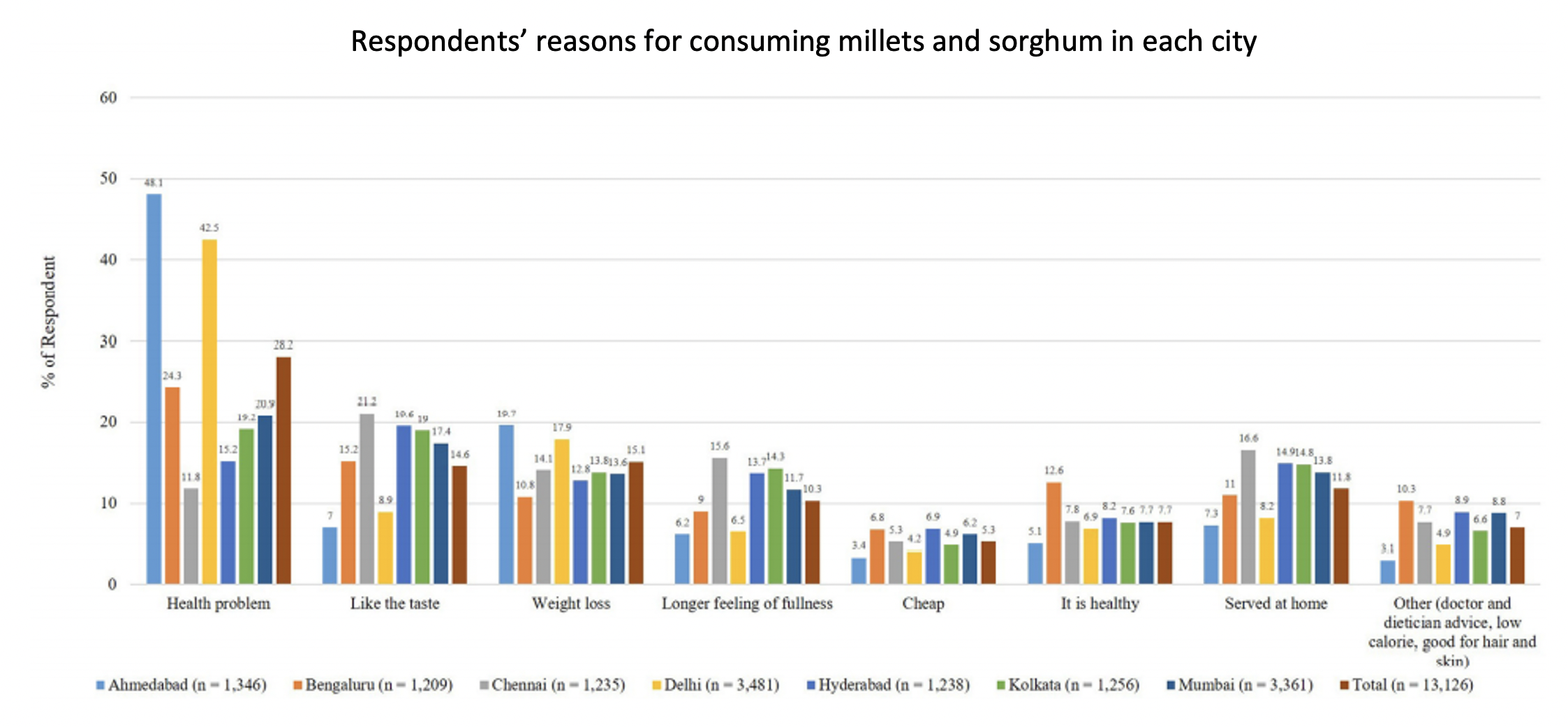
Respondents' reasons for not consuming millets and sorghum in each city
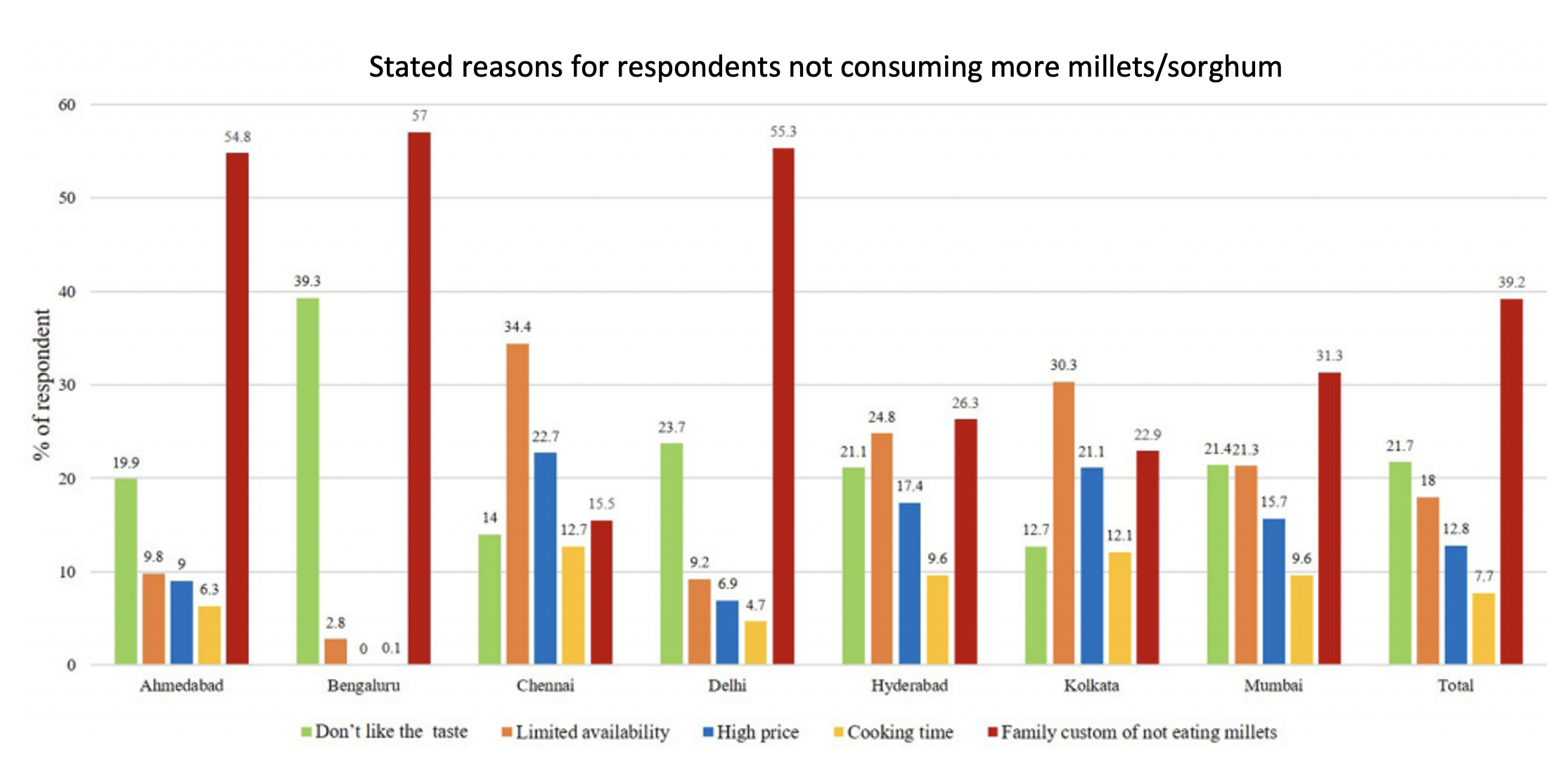
Common forms in which millets are eaten in different cities
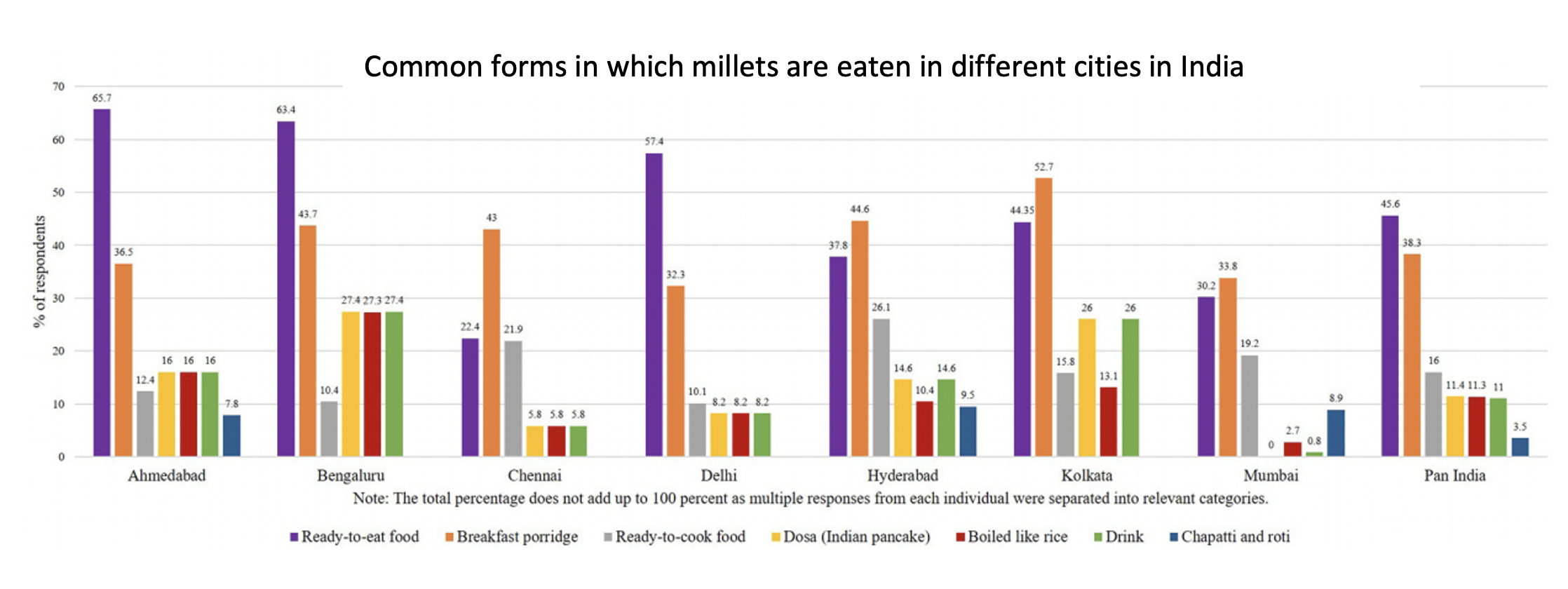
Frequency of consumption of millets and sorghum in seven cities

Author affiliations:
Joanna Kane-Potaka , Seetha Anitha, Muralidhar Budumuru, Parkavi Kumar, Ashok Kumar Jalagam and Swamikannu Nedumaran: Smart Food Initiative, International Crops Research Institute for the Semi-Arid Tropics, Hyderabad, India
Takuji W. Tsusaka: Organization for Q7 Advanced and Integrated Research, Kobe University, Kobe, Japan
Rosemary Botha: Development Strategy and Governance Division, International Food Policy Research Institute, Lilongwe, Malawi
Shweta Upadhyay: United Nations International Children’s Emergency Fund, Lilongwe, Malawi
This study is part of a Frontiers journal special research topic – Smart Food for Healthy, Sustainable and Resilient Food Systems.
